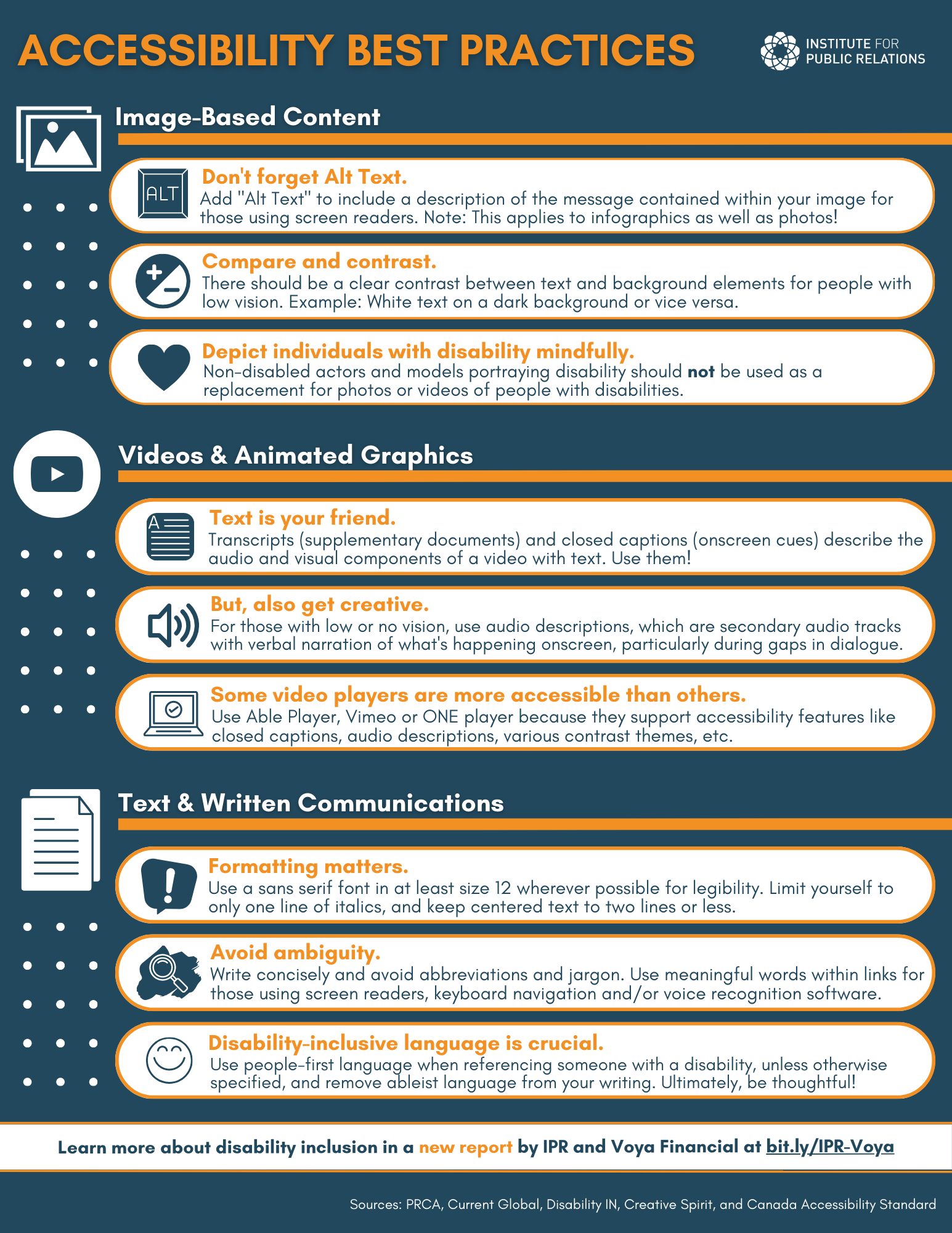
ChatGPT: A communicator’s friend or foe?
 This blog is provided by the IPR Behavioral Insights Research CenterWe’ve started to get glimpses into what AI means for the comms and PR professions, and not all the news is good…As AI has burst onto the scene, no one has missed the fact that it will have huge ramifications — not only in our work lives, but for society at large. This is especially true in terms of privacy, regulation, and information access — not to mention the very definitions of originality, authenticity, and art. There is talk of a “Cambrian explosion” in terms of AI’s impact on our world, due to its exponential enablement of new technology and generative outputs. But what specifically does it mean for professional communicators?AI’s newer generative language models, such as ChatGPT, are transforming the business landscape in ways that have huge knock-on effects for the profession. The push of a button is all it takes to create original content, mimic narrative styles, paraphrase texts, and in some cases, design compelling rhetoric that can sway and motivate. It’s patently clear that this is going to be a game changer and relieve at least some of the more tedious tasks in comms. Not to mention the fact that it’s really fun to use. Why, then, does it make us feel so uneasy?In my book, published last year (a lifetime ago in AI terms), I emphasized that generative AI poses a significant threat to the communication and PR professions. In terms of day-to-day content production — such as press releases, corporate announcements, and basic journalism — ChatGPT and its variants can produce convincing and accurate copy in a fraction of the time it takes a human being. This is especially threatening to entry-level and junior communications roles. But the fact is that this type of technological encroachment as inevitable as taxes and death. Just as robotic chefs and robotic surgeons and AI-powered legal contracts will soon become commonplace, many communication tasks will be outsourced to machines. This will undoubtedly create crises for employment and financial security — and it will also create crises around the purpose and meaning of apprenticeships and on-the-job learning — not just for comms, but for all impacted professions.The good news is that communicators have an ace in their pocket. We are still a long way from surrendering organizational and leadership communication to a machine, at least for the time being. This is for two different reasons:1.) There is a dark side to these technologies Even in the earliest days of GPT-2 and GPT-3, researchers found that generative AI excels at generating disinformation — a phenomenon that Politico’s AI reporter Melissa Heikkilä cleverly described as “filling the swamp.” Generative AI is alarmingly effective at crafting slick-sounding messages — from QAnon conspiracy theories and climate change denial to extremist narratives and radical ideologies.With this kind of gloomy research, however, we can glean many useful insights. Because AI is so effective at “filling the swamp,” it means that the structure of disinformation itself must be formulaic or algorithmic. IPR published a valuable primer on how to detect disinformation, and these clues, along with academic research into AI, may help us learn how to reverse engineer it.2.) Generative AI’s output is decontextualizedChatGPT is a generative technology, but that doesn’t mean that the content it generates is meaningful or even relevant. In Alan Turing’s imitation game, a series of questions can determine if one is interacting with a human or a machine, but the results of the game depend not only on the ability to give correct answers, but on how closely the answers resemble those that an actual human would give. In other words, the machine eventually reveals itself. For the time being at least, for any issue of real consequence, ChatGPT is an imitation and not the real McCoy.For these reasons, I believe that generative AI presents an opportunity for the communication profession to grow, even as it increasingly threatens many livelihoods. It may, in fact, be because of the threat that it forces change. It does this by providing an impetus to up our game and focus our time and energy on how to develop more perceptive, sincere, thoughtful, and yes, human communication — that can only be done by people. This is easier said than done, but it will mark the next era of the profession. And provide an even greater reason for corporate communicators to have a seat at the table in the organizations they serve.ReferencesBuchanan, B., Lohn, A., Musser, M., & Sedova, K. (2021, May). Truth, lies, and automation: How language models could change disinformation. Center for Security and Emerging Technology. https://cset.georgetown.edu/public ation/truth-lies-and-automation/McGuffie, K., & Newhouse, A. (2020). The radicalization risks of GPT-3 and advanced neural language models. Center on Terrorism, Extremism, and Counterterrorism, Middlebury Institute of International Studies at Monterrey. https://www.middlebury.edu/institute/sites/www.middlebury.edu.institute/files/2020-09/gpt3-article.pdf
This blog is provided by the IPR Behavioral Insights Research CenterWe’ve started to get glimpses into what AI means for the comms and PR professions, and not all the news is good…As AI has burst onto the scene, no one has missed the fact that it will have huge ramifications — not only in our work lives, but for society at large. This is especially true in terms of privacy, regulation, and information access — not to mention the very definitions of originality, authenticity, and art. There is talk of a “Cambrian explosion” in terms of AI’s impact on our world, due to its exponential enablement of new technology and generative outputs. But what specifically does it mean for professional communicators?AI’s newer generative language models, such as ChatGPT, are transforming the business landscape in ways that have huge knock-on effects for the profession. The push of a button is all it takes to create original content, mimic narrative styles, paraphrase texts, and in some cases, design compelling rhetoric that can sway and motivate. It’s patently clear that this is going to be a game changer and relieve at least some of the more tedious tasks in comms. Not to mention the fact that it’s really fun to use. Why, then, does it make us feel so uneasy?In my book, published last year (a lifetime ago in AI terms), I emphasized that generative AI poses a significant threat to the communication and PR professions. In terms of day-to-day content production — such as press releases, corporate announcements, and basic journalism — ChatGPT and its variants can produce convincing and accurate copy in a fraction of the time it takes a human being. This is especially threatening to entry-level and junior communications roles. But the fact is that this type of technological encroachment as inevitable as taxes and death. Just as robotic chefs and robotic surgeons and AI-powered legal contracts will soon become commonplace, many communication tasks will be outsourced to machines. This will undoubtedly create crises for employment and financial security — and it will also create crises around the purpose and meaning of apprenticeships and on-the-job learning — not just for comms, but for all impacted professions.The good news is that communicators have an ace in their pocket. We are still a long way from surrendering organizational and leadership communication to a machine, at least for the time being. This is for two different reasons:1.) There is a dark side to these technologies Even in the earliest days of GPT-2 and GPT-3, researchers found that generative AI excels at generating disinformation — a phenomenon that Politico’s AI reporter Melissa Heikkilä cleverly described as “filling the swamp.” Generative AI is alarmingly effective at crafting slick-sounding messages — from QAnon conspiracy theories and climate change denial to extremist narratives and radical ideologies.With this kind of gloomy research, however, we can glean many useful insights. Because AI is so effective at “filling the swamp,” it means that the structure of disinformation itself must be formulaic or algorithmic. IPR published a valuable primer on how to detect disinformation, and these clues, along with academic research into AI, may help us learn how to reverse engineer it.2.) Generative AI’s output is decontextualizedChatGPT is a generative technology, but that doesn’t mean that the content it generates is meaningful or even relevant. In Alan Turing’s imitation game, a series of questions can determine if one is interacting with a human or a machine, but the results of the game depend not only on the ability to give correct answers, but on how closely the answers resemble those that an actual human would give. In other words, the machine eventually reveals itself. For the time being at least, for any issue of real consequence, ChatGPT is an imitation and not the real McCoy.For these reasons, I believe that generative AI presents an opportunity for the communication profession to grow, even as it increasingly threatens many livelihoods. It may, in fact, be because of the threat that it forces change. It does this by providing an impetus to up our game and focus our time and energy on how to develop more perceptive, sincere, thoughtful, and yes, human communication — that can only be done by people. This is easier said than done, but it will mark the next era of the profession. And provide an even greater reason for corporate communicators to have a seat at the table in the organizations they serve.ReferencesBuchanan, B., Lohn, A., Musser, M., & Sedova, K. (2021, May). Truth, lies, and automation: How language models could change disinformation. Center for Security and Emerging Technology. https://cset.georgetown.edu/public ation/truth-lies-and-automation/McGuffie, K., & Newhouse, A. (2020). The radicalization risks of GPT-3 and advanced neural language models. Center on Terrorism, Extremism, and Counterterrorism, Middlebury Institute of International Studies at Monterrey. https://www.middlebury.edu/institute/sites/www.middlebury.edu.institute/files/2020-09/gpt3-article.pdf
 Laura McHale is the Managing Director and Leadership Psychologist Expert at Conduit Consultants Limited. McHale is an expert in assessments, leadership, and team effectiveness. She is the author of Neuroscience for Organizational Communication. She currently serves on the IPR Behavioral Insights Research Center Board of Advisors.
...
Laura McHale is the Managing Director and Leadership Psychologist Expert at Conduit Consultants Limited. McHale is an expert in assessments, leadership, and team effectiveness. She is the author of Neuroscience for Organizational Communication. She currently serves on the IPR Behavioral Insights Research Center Board of Advisors.
...

 Matt Charles, DPA, APR, teaches Crisis Communications for the Georgetown University School of Continuing Studies Master’s in Public Relations and Corporate Communications program and is President & Founder of Matt Charles Public Relations+Strategy.
...
Matt Charles, DPA, APR, teaches Crisis Communications for the Georgetown University School of Continuing Studies Master’s in Public Relations and Corporate Communications program and is President & Founder of Matt Charles Public Relations+Strategy.
... 







 Dr. Hongmei Shen and Dr. Chunbo Ren sought to define and establish disengagement as a unique concept. They also identified which factors drove disengagement and explored the behaviors through which it manifests. The study was motivated by the increasing global prevalence of employee disengagement and its detrimental effects on both organizational performance and culture.To better understand what disengagement looks like and how to define it, the researchers conducted 24 in-depth interviews with employees working in China.Key Findings — The researchers found that disengagement behaviors included an indifferent attitude to work, pulling away from being involved with colleagues and work events and a “who cares” approach to high priority tasks. — While disengagement and burnout are often perceived as similar, this study revealed a distinction between the two. Burnout is not characterized by a lack of willingness to contribute, but rather a state of being overwhelmed that restricts one’s capacity. On the other hand, disengagement involves employees who possess the necessary capacity and bandwidth but lack the motivation to actively engage.— Burnout can be understood as a temporary state that, if not remedied, can eventually lead to the more long-lasting state of disengagement. Implications for PracticeEmployers should recognize the significance of an employee’s alignment with both their role and the organizational culture as crucial factors influencing disengagement. A mismatch in these areas often serves as a predictor of disengaging behaviors. Additionally, employers should be mindful that they can adopt mitigating measures to decrease disengagement. This can be achieved through practices like actively listening to employees and actively involving them in the decision-making process of the organization. Click here to understand more about what disengagement looks like, how to recognize it, and how to prevent it.Shen, H., & Ren, C. (2023). Reconceptualizing employee disengagement as both attitudinal and behavioral: Narratives from China. Public Relations Review, 49(2), 102318.
...
Dr. Hongmei Shen and Dr. Chunbo Ren sought to define and establish disengagement as a unique concept. They also identified which factors drove disengagement and explored the behaviors through which it manifests. The study was motivated by the increasing global prevalence of employee disengagement and its detrimental effects on both organizational performance and culture.To better understand what disengagement looks like and how to define it, the researchers conducted 24 in-depth interviews with employees working in China.Key Findings — The researchers found that disengagement behaviors included an indifferent attitude to work, pulling away from being involved with colleagues and work events and a “who cares” approach to high priority tasks. — While disengagement and burnout are often perceived as similar, this study revealed a distinction between the two. Burnout is not characterized by a lack of willingness to contribute, but rather a state of being overwhelmed that restricts one’s capacity. On the other hand, disengagement involves employees who possess the necessary capacity and bandwidth but lack the motivation to actively engage.— Burnout can be understood as a temporary state that, if not remedied, can eventually lead to the more long-lasting state of disengagement. Implications for PracticeEmployers should recognize the significance of an employee’s alignment with both their role and the organizational culture as crucial factors influencing disengagement. A mismatch in these areas often serves as a predictor of disengaging behaviors. Additionally, employers should be mindful that they can adopt mitigating measures to decrease disengagement. This can be achieved through practices like actively listening to employees and actively involving them in the decision-making process of the organization. Click here to understand more about what disengagement looks like, how to recognize it, and how to prevent it.Shen, H., & Ren, C. (2023). Reconceptualizing employee disengagement as both attitudinal and behavioral: Narratives from China. Public Relations Review, 49(2), 102318.
... 
 This blog is provided by the IPR Organizational Communication Research Center.Internal Communication (IC) is an essential part of any organization’s success. It is the backbone of a company’s culture and its ability to drive performance, engagement, and commitment among employees. However, measuring the effectiveness of internal communication has often been ignored or considered unimportant due to various reasons such as lack of resources, time, and effort. Some leaders also struggle to see the correlation between IC and business issues. But times are changing, and businesses are measuring more than ever, making it a strategic imperative.According to a 2023 Deloitte study, 58% of corporate affairs leaders consider data and insights to be their top area for improvement. This indicates the need for organizations to invest more in communication measurement and evaluation. The 2023 Brand Finance report, which ranks the world’s most valuable brands, also highlights that brands consistently make up 20-25% of the value of listed companies. Measurement and evaluation are crucial in helping leaders appreciate the value of brands, both internal and external.Measuring internal communication goes beyond proving value; it is now viewed as a strategic tool to make effective decisions and guide business priorities. It helps diagnose issues, allocate resources, create programs, and take action based on insights from data analysis.So, how can you ensure that internal communication measurement is a priority for your organization? Here are some strategies to consider:Set clear and SMART goals that align with the business’s priorities. For example, you could aim to enhance team outreach over the next six months by conducting six monthly meetups and engagement initiatives. Objectives could include increasing staff awareness and commitment to the organization’s purpose and goals, encouraging staff to talk positively about the company, improving brand perception and reputation, connecting staff to each other and the organization’s purpose, and increasing engagement and effectiveness in their roles.Identify specific audiences to engage, from skeptics to committed supporters and everyone in between. Getting everyone on board matters for successfully embedding measurement as a practice within the organization.Create a dashboard that brings all communication activities together, allowing stakeholders to see a comprehensive view of communication activities.Demonstrate the value of measurement by making it visible and inclusive. Invite stakeholders to share what they value the most, and ask what they think the organization should measure and report.Revisit and enhance how communication can further impact the business.Train “power” users of communications within business teams to be upskilled on measurement.Show how internal communication measurement can link to external communication and vice versa. For example, demonstrate how staff can act as ambassadors and contribute to content marketing in ways that help the brand’s reputation externally.The Barcelona Principles 2.0 recommend focusing on measuring outcomes (awareness, knowledge, relevance, etc.) and impact (such as productivity, innovation, reputation, safety, employee retention, and innovation), not just outputs like hits, views, or likes. Approaches for measurement and evaluation include surveys, polls, focus groups, interviews, and sentiment analysis.According to a Gartner update, most organizations do not invest enough in measurement or innovation. Organizations also tend to avoid broadcasting the value and impact of measurement and evaluation, which limits how the function is perceived.To effectively measure and evaluate internal communication, there are a few key questions that internal communicators should consider. By answering these questions, communicators can gain valuable insights into what is working, what isn’t, and how they can improve their strategies going forward. Here are some key questions to consider:Which channels are working well? Why?It’s important to understand which communication channels are resonating with employees and why. This can help communicators focus their efforts on the channels that are most effective, while also identifying areas for improvement. For example, if email newsletters are consistently getting high open and click-through rates, it might make sense to invest more resources into that channel. On the other hand, if social media posts aren’t getting much engagement, it might be worth exploring other channels that might be a better fit.Which content elements are trending? What is driving engagement?Similarly, it’s important to understand which types of content are resonating with employees and why. This can help communicators create more engaging content in the future. For example, if videos are consistently getting more views than other types of content, it might make sense to create more video content. On the other hand, if blog posts aren’t getting much engagement, it might be worth exploring other types of content that might be more engaging.Which type of employees are most involved? What are the drivers?It’s also important to understand which types of employees are most engaged with internal communication, and what is driving their engagement. This can help communicators tailor their strategies to better meet the needs and interests of different employee groups. For example, if younger employees are more likely to engage with social media content, it might make sense to create more social media content targeted at that demographic.How can internal communicators raise the profile of the function?Finally, it’s important for internal communicators to think about how they can raise the profile of the function within the organization. This might involve highlighting the impact that internal communication has on the organization or demonstrating the value of measurement and evaluation. By showing how internal communication is contributing to the success of the organization, communicators can ensure that their function is seen as an important part of the business.Measuring internal communication is more important than ever, and it requires a strategic approach. By setting clear goals, identifying specific audiences, creating a dashboard, demonstrating value, revisiting and enhancing communication impact, upskilling internal communication teams, and linking internal communication measurement to external communications, organizations can effectively measure the impact of internal communication and drive better results.
This blog is provided by the IPR Organizational Communication Research Center.Internal Communication (IC) is an essential part of any organization’s success. It is the backbone of a company’s culture and its ability to drive performance, engagement, and commitment among employees. However, measuring the effectiveness of internal communication has often been ignored or considered unimportant due to various reasons such as lack of resources, time, and effort. Some leaders also struggle to see the correlation between IC and business issues. But times are changing, and businesses are measuring more than ever, making it a strategic imperative.According to a 2023 Deloitte study, 58% of corporate affairs leaders consider data and insights to be their top area for improvement. This indicates the need for organizations to invest more in communication measurement and evaluation. The 2023 Brand Finance report, which ranks the world’s most valuable brands, also highlights that brands consistently make up 20-25% of the value of listed companies. Measurement and evaluation are crucial in helping leaders appreciate the value of brands, both internal and external.Measuring internal communication goes beyond proving value; it is now viewed as a strategic tool to make effective decisions and guide business priorities. It helps diagnose issues, allocate resources, create programs, and take action based on insights from data analysis.So, how can you ensure that internal communication measurement is a priority for your organization? Here are some strategies to consider:Set clear and SMART goals that align with the business’s priorities. For example, you could aim to enhance team outreach over the next six months by conducting six monthly meetups and engagement initiatives. Objectives could include increasing staff awareness and commitment to the organization’s purpose and goals, encouraging staff to talk positively about the company, improving brand perception and reputation, connecting staff to each other and the organization’s purpose, and increasing engagement and effectiveness in their roles.Identify specific audiences to engage, from skeptics to committed supporters and everyone in between. Getting everyone on board matters for successfully embedding measurement as a practice within the organization.Create a dashboard that brings all communication activities together, allowing stakeholders to see a comprehensive view of communication activities.Demonstrate the value of measurement by making it visible and inclusive. Invite stakeholders to share what they value the most, and ask what they think the organization should measure and report.Revisit and enhance how communication can further impact the business.Train “power” users of communications within business teams to be upskilled on measurement.Show how internal communication measurement can link to external communication and vice versa. For example, demonstrate how staff can act as ambassadors and contribute to content marketing in ways that help the brand’s reputation externally.The Barcelona Principles 2.0 recommend focusing on measuring outcomes (awareness, knowledge, relevance, etc.) and impact (such as productivity, innovation, reputation, safety, employee retention, and innovation), not just outputs like hits, views, or likes. Approaches for measurement and evaluation include surveys, polls, focus groups, interviews, and sentiment analysis.According to a Gartner update, most organizations do not invest enough in measurement or innovation. Organizations also tend to avoid broadcasting the value and impact of measurement and evaluation, which limits how the function is perceived.To effectively measure and evaluate internal communication, there are a few key questions that internal communicators should consider. By answering these questions, communicators can gain valuable insights into what is working, what isn’t, and how they can improve their strategies going forward. Here are some key questions to consider:Which channels are working well? Why?It’s important to understand which communication channels are resonating with employees and why. This can help communicators focus their efforts on the channels that are most effective, while also identifying areas for improvement. For example, if email newsletters are consistently getting high open and click-through rates, it might make sense to invest more resources into that channel. On the other hand, if social media posts aren’t getting much engagement, it might be worth exploring other channels that might be a better fit.Which content elements are trending? What is driving engagement?Similarly, it’s important to understand which types of content are resonating with employees and why. This can help communicators create more engaging content in the future. For example, if videos are consistently getting more views than other types of content, it might make sense to create more video content. On the other hand, if blog posts aren’t getting much engagement, it might be worth exploring other types of content that might be more engaging.Which type of employees are most involved? What are the drivers?It’s also important to understand which types of employees are most engaged with internal communication, and what is driving their engagement. This can help communicators tailor their strategies to better meet the needs and interests of different employee groups. For example, if younger employees are more likely to engage with social media content, it might make sense to create more social media content targeted at that demographic.How can internal communicators raise the profile of the function?Finally, it’s important for internal communicators to think about how they can raise the profile of the function within the organization. This might involve highlighting the impact that internal communication has on the organization or demonstrating the value of measurement and evaluation. By showing how internal communication is contributing to the success of the organization, communicators can ensure that their function is seen as an important part of the business.Measuring internal communication is more important than ever, and it requires a strategic approach. By setting clear goals, identifying specific audiences, creating a dashboard, demonstrating value, revisiting and enhancing communication impact, upskilling internal communication teams, and linking internal communication measurement to external communications, organizations can effectively measure the impact of internal communication and drive better results.
 Aniisu K. Verghese, Ph.D., is a globally recognized communicator and Prosci® Certified Change Management Practitioner with over two decades of experience. Aniisu holds a Ph.D. in organizational communications, runs Intraskope, a boutique communication and personal branding consultancy, and is based in Krakow, Poland. His mission is to help individuals and organizations discover and develop their sweet-spot through effective communications. He is the author of Internal Communications – Insights, Practices and Models.
...
Aniisu K. Verghese, Ph.D., is a globally recognized communicator and Prosci® Certified Change Management Practitioner with over two decades of experience. Aniisu holds a Ph.D. in organizational communications, runs Intraskope, a boutique communication and personal branding consultancy, and is based in Krakow, Poland. His mission is to help individuals and organizations discover and develop their sweet-spot through effective communications. He is the author of Internal Communications – Insights, Practices and Models.
...